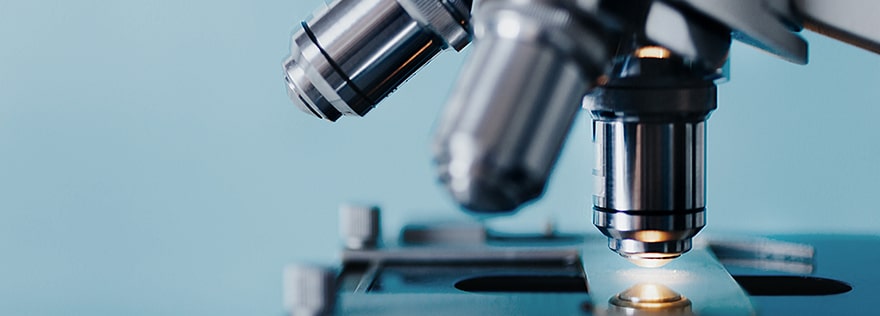
Analytical Technology
Strength of Our Analytical Technology
- Results obtained by the use of our state-of-the-art analytical equipment and technology provide significant pointers to the direction of new product development, and we support the needs of advanced research from all angles.
- Through our skilled techniques, we contribute to quality activities that enable customers to use high-quality products with peace of mind.
- Through optimal personnel deployment and advanced equipment, we provide analysis technology which equals or surpasses external professional technology organizations.
Organization and functions
To respond to various analytical requests, personnel perform analyses using state-of-the-art instruments at both the Tsukuba and Numazu plants.
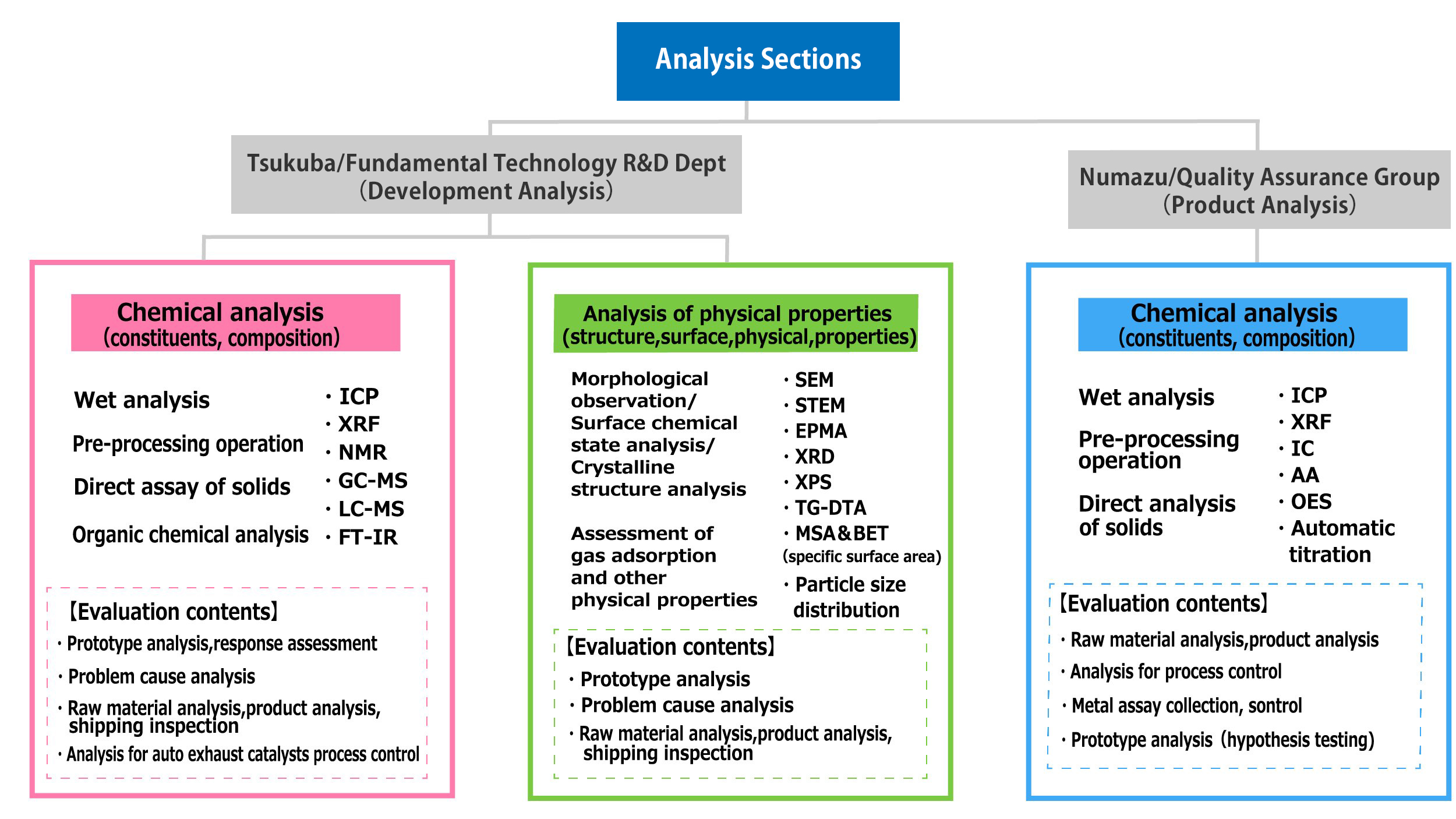
Introduction of Main Equipment
Tsukuba/ Fundamental Technology R&D Dept.
-
STEM
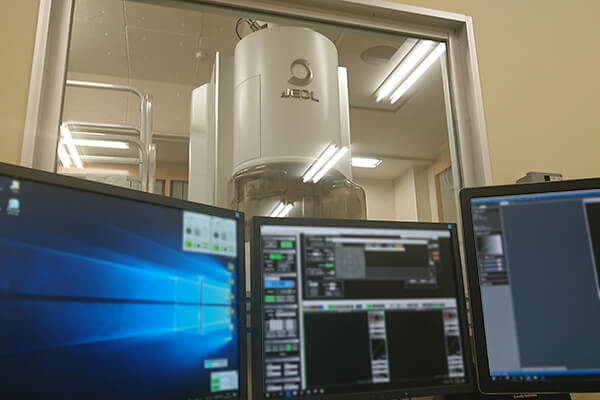
- Performs observation and qualitative analysis of nano-size materials
- Also capable of stereoscopic viewing of the 3D structures of nano-size materials
-
XPS
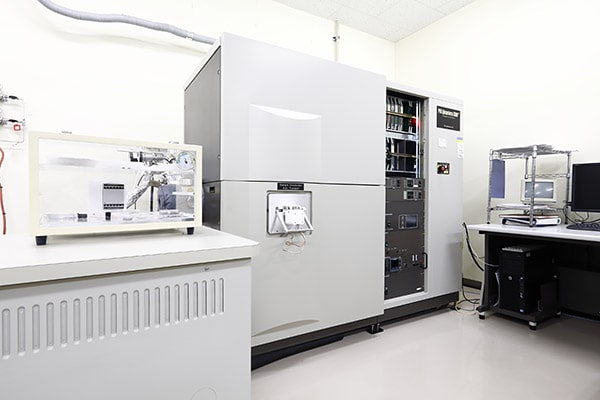
- Identifies electronic states (chemical bonding and/or valence numbers) of an element in samples
- Capable of acquiring information of composition on the outermost surface (a few nm) of samples
-
XRD
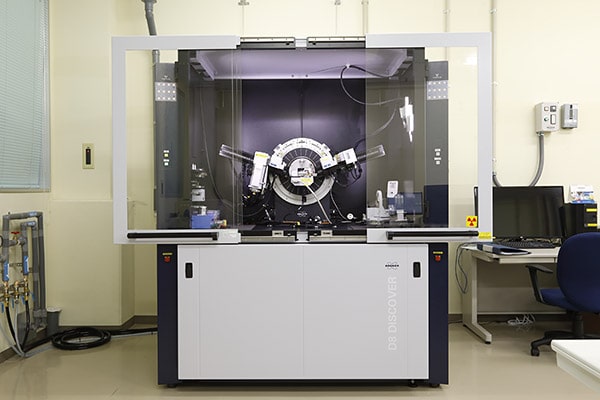
- Assays crystalline structure of materials
- Allows measurement of samples while heating
-
EPMA
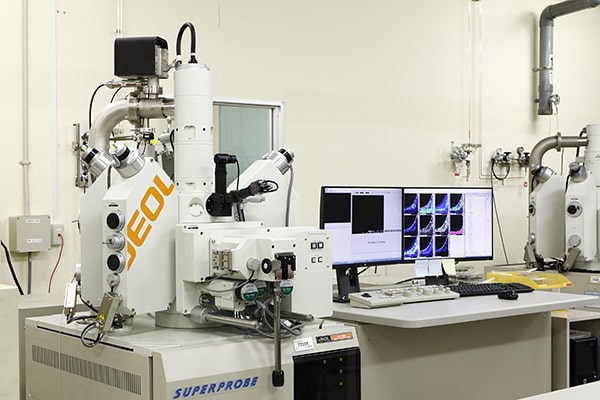
- Performs mapping analysis of each element in the designated region of samples
- Has a resolution equivalent to that of an electronic microscope
-
ICP-MS
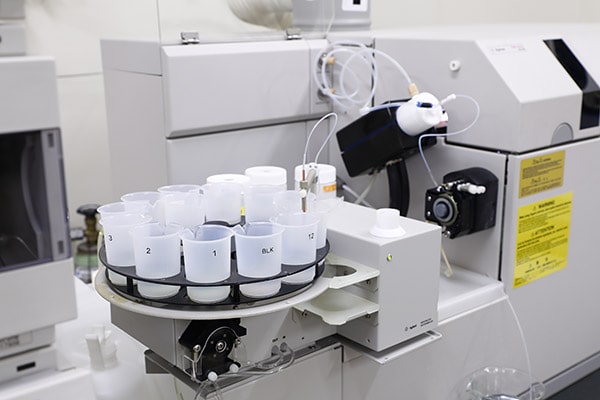
- Performs quantitative analysis of a minute amount of an element at a ppt level in a solution
-
NMR
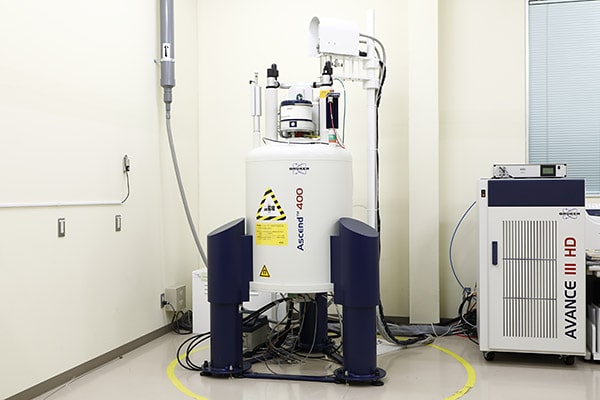
- Analyzes molecular structure and composition of organic compounds in general
- Capable of structure evaluation of not only samples in solution but also solids such as zeolite
-
LC-ICP
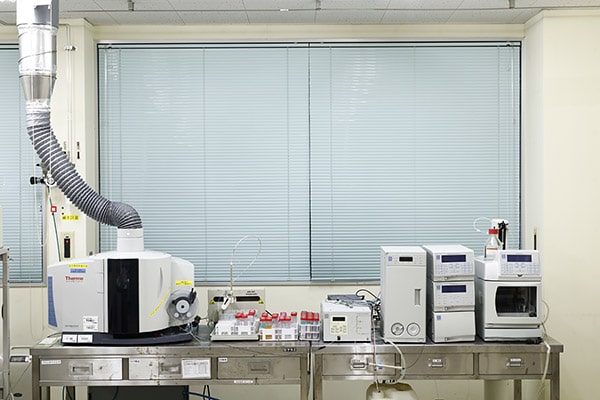
- Performs quantitative analysis of metal compounds isolated through LC (liquid chromatography) and introduced into ICP
-
GC-MS
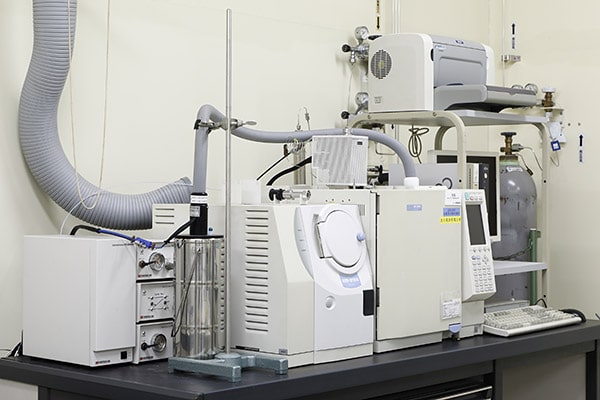
- Performs qualitative and quantitative analyses of components isolated through gas chromatography using a mass spectrometer
Numazu/ Quality Assurance Group
-
Optical Emission Spectrometer
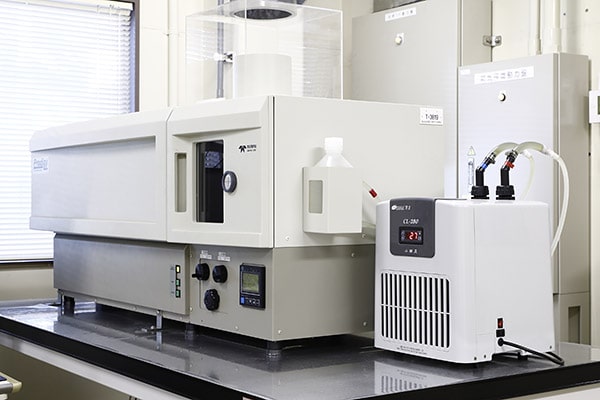
- Used for quantitative analysis of impurities in precious metals
- Allows measurements of samples in solid form
-
XRF
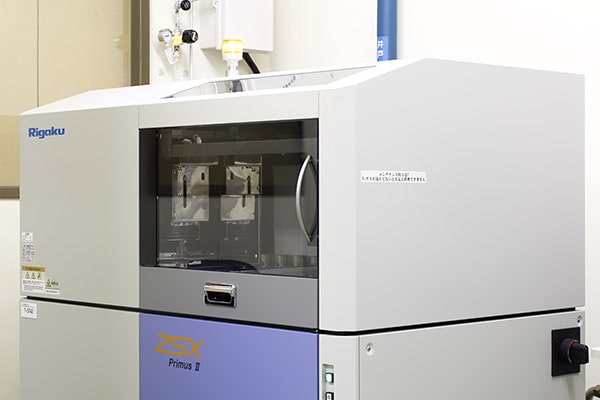
- Performs qualitative and quantitative analyses of both solid and solution samples based on fluorescence X-rays emitted from samples irradiated with X-rays.
-
ICP for precious metals
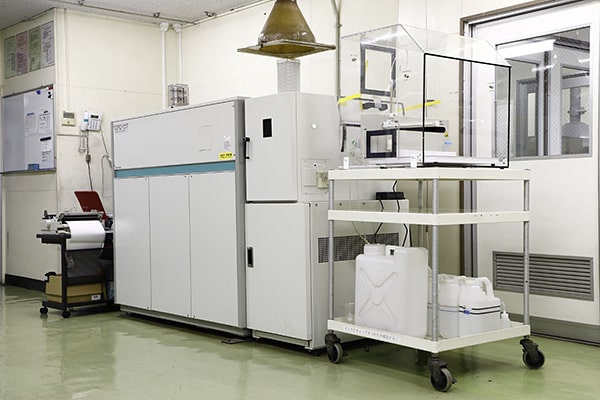
- Dedicated to quantitative analysis of precious metals
-
ICP for general purposes
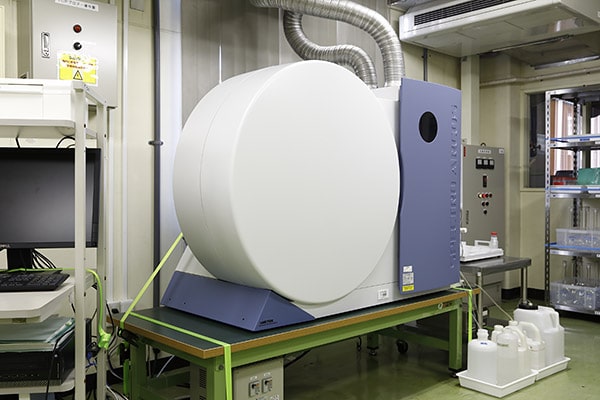
- Capable of simultaneous measurements of several tens of elements and measurements of halogens.
Introduction of Main Analysis Methods
-
Isolation of precious metals:
① Precipitation separation
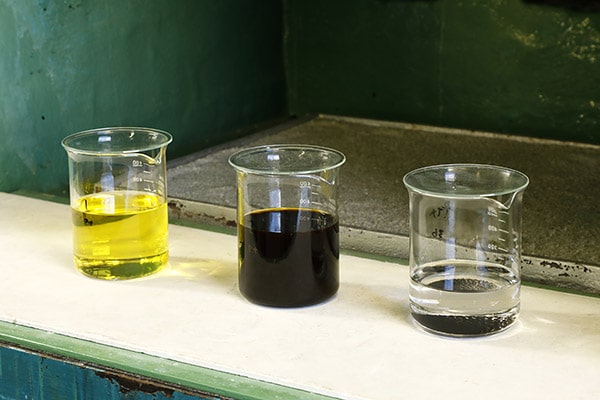
- By adding a chemical solution and heating, the precious metal in solution is precipitated and separated.
-
Isolation of precious metal:
② Ion exchange separation
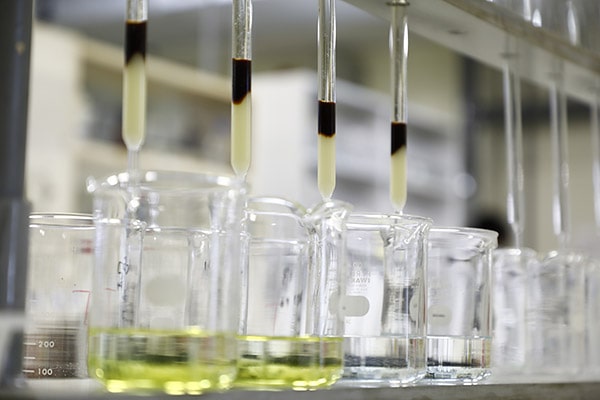
- Pd in the solution is adsorbed and isolated using ionic exchange resin.
-
Gravimetric analysis of Au
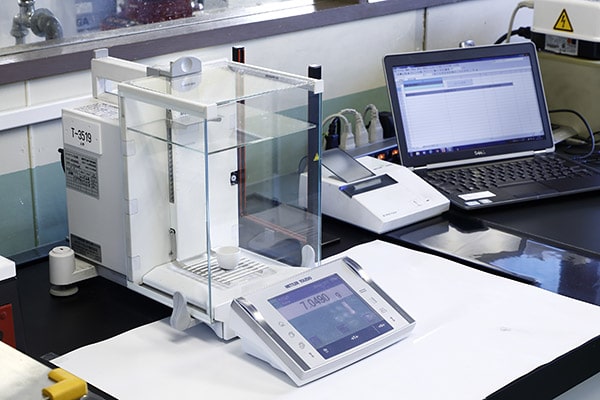
- Au is weighed after firing.
-
Volumetric analysis of Pd
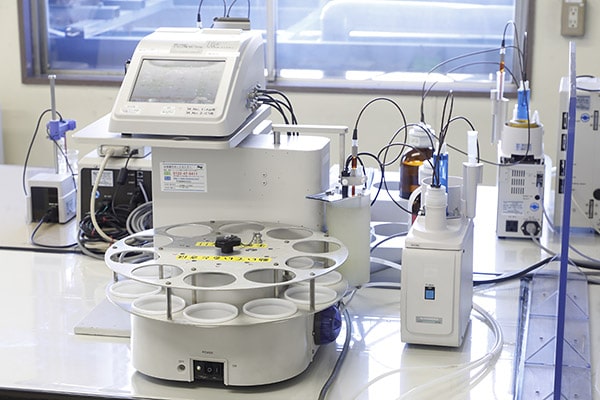
- Pd in the solution is quantified after a chemical solution is added.

